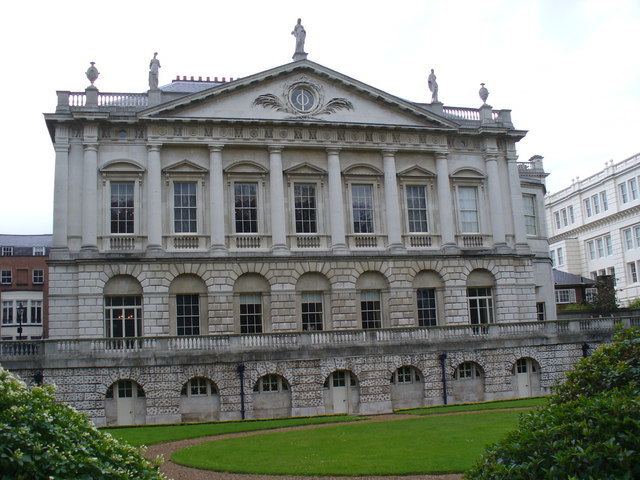 | ||
Townhouse in British usage originally refers to the town or city residence, in practice normally in London, of a member of the nobility or gentry, as opposed to their country seat, generally known as a country house or, colloquially, for the larger ones, stately home. The grandest of the London townhouses were stand-alone buildings, but many were terraced buildings.
Contents
In modern usage for marketing purposes, British property developers and estate agents often call new city terraced houses, townhouses, following the North American usage of the term, to aggrandise modest dwellings and to avoid the negative connotation of cheap terraced housing built in the Victorian era to accommodate workers. The aristocratic pedigree of terraced housing, for example as survives in St James's Square in Westminster, is widely forgotten. The term is comparable to the hôtel particulier which housed the French nobleman in Paris.
Background
Historically, a town house was the city residence of a noble or wealthy family, who would own one or more country houses, generally manor houses, in which they lived for much of the year and from the estates surrounding which they derived much of their wealth and political power. Many of the Inns of Court in London served this function, for example Gray's Inn was the London townhouse of Reginald de Grey, 1st Baron Grey de Wilton (d.1308). From the 18th century, landowners and their servants would move to a townhouse during the social season (when balls and other society gatherings took place).
From the 18th century most townhouses were terraced; it was one of the successes of Georgian architecture to persuade the rich to buy terraced houses, especially if they were in a garden square. Only a small minority of them, generally the largest, were detached, but even aristocrats whose country houses had grounds of hundreds or thousands of acres often lived in terraced houses in town. For example, the Duke of Norfolk owned Arundel Castle in the country, while from 1722 his London house, Norfolk House, was a terraced house in St James's Square over 100 feet (30 metres) wide.
London
In the Middle Ages the London residences of the nobility were generally situated within the walls or boundary of the City of London, often known as "Inns", for example Lincoln's Inn was the town house of the Earl of Lincoln, Gray's Inn of the Baron Grey de Wilton. They gradually spread onto the Strand, the main ceremonial thoroughfare from the City to the Palace of Westminster, where parliamentary and court business were transacted. Areas such as Kensington and Hampstead were countryside hamlets outside London until the 19th century, so mansions in these areas, such as Holland House, cannot be considered as true historical townhouses. Bishops also had London residences, generally termed Palaces, for example Lambeth Palace, Ely Palace, etc. Many aristocratic townhouses were demolished or ceased to be used for residential purposes after the First World War.
The greatest residence on the Strand was the Savoy Palace, residence of John of Gaunt, Duke of Lancaster, the richest man in the kingdom in his age. The Strand had the advantage of river frontage to the Thames, which gave the nobles their own private landing places. The next fashion was to move still further westwards to St James's, to be near the Tudor royal court. In the 18th century Covent Garden was developed by the Duke of Bedford on his Bedford Estate and Mayfair by the Grosvenor family on their Grosvenor Estate. The final fashion before the modern era was for a residence on the former marsh-land of Belgravia, developed after the establishment of Mayfair also by the Duke of Westminster. The following examples, most of which are now demolished, are comparable to the Parisian Hôtel particulier:
Secular houses
Episcopal palaces
English Provinces
Whilst most English examples of the townhouse occur in the capital, the provincial cities also contain some historical examples, for example Bampfylde House (destroyed in WW II) in Exeter, the county capital of Devon, the town house of Baron Poltimore of the Bampfylde family, whose main country seat was Poltimore House in Devon. Also in Exeter was Bedford House, also demolished, the town residence of the Duke of Bedford who resided principally at Woburn Abbey in Bedfordshire but required a base in the West Country from which to administer his vast estates there.
Edinburgh
Dublin
Georgian Dublin consisted of five Georgian squares, which contained the townhouses of prominent peers. The squares were Merrion Square, St Stephen's Green, Fitzwilliam Square, Ruthland Square (now called Parnell Square) and Mountjoy Square. Many of the townhouses in these squares are now offices while some have been demolished.
